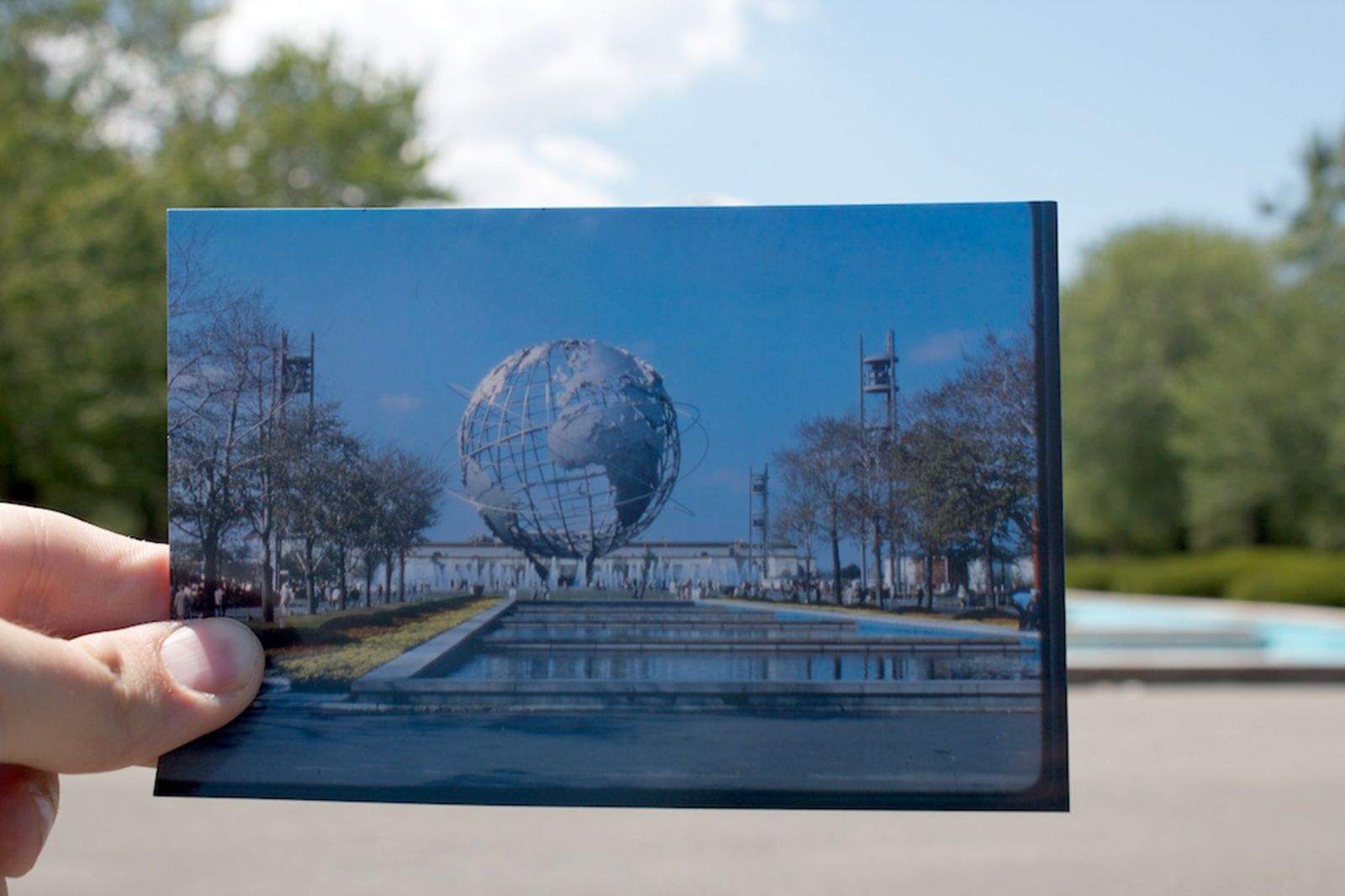Mitch Silverstein would have many visions of the future in 1964 and the first would appear in full-color wonder, his big 6-year-old eyes staring back at him in disbelief.
 He was seeing himself on a color television at the RCA Pavilion at the World’s Fair at Corona Park in Queens, New York.
He was seeing himself on a color television at the RCA Pavilion at the World’s Fair at Corona Park in Queens, New York.
“It left such a big impression on me,” Silverstein said. “That was a first for most people because that was a pretty major technological step.”
For all the things the New York World’s Fair of 1964-65 was said to get wrong, the fair showcased several technological wonders that, some 50 years later, we take for granted.
The World’s Fair has a special place in the heart of baby boomers, who were among the 51 million to stroll the fair. The event was a showcase of America’s best right after the assassination of a president, in the midst of a Cold War and on the eve of turmoil with the Vietnam conflict.
The Space Race, and John F. Kennedy’s promise to put a man on the moon by the end of the decade, was on full, ambitious display, complete with a Saturn V rocket and Apollo Lunar module, four years before the first of the Apollo missions began.
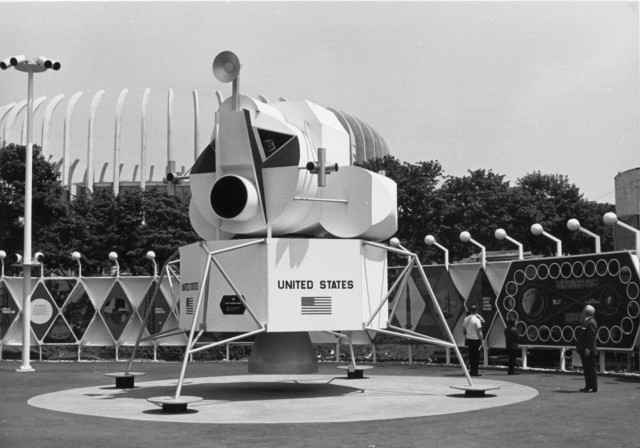
Americans, wary of computers and how they could disrupt life, got friendly with the technology at the IBM pavilion, where people could sit down at a terminal, punch in a date and get a New York Times headline from that day, a primitive search engine long before the days of Google.
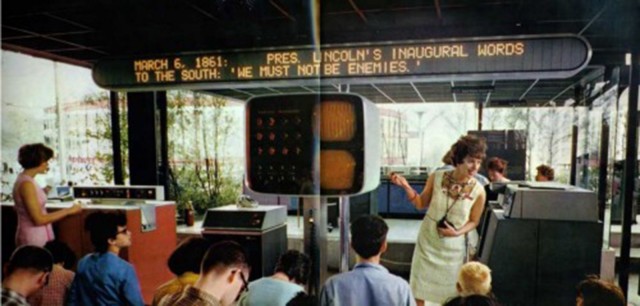
Bell Telephone would introduce the Picture Phone, an early version of Skype or FaceTime. People could position themselves in booths around the fair grounds, pick up a handset and talked to a friend or family member whose face would appear on oval-shaped monitor. Bell marketed the technology for companies, but few signed on because of the cost of the calls.
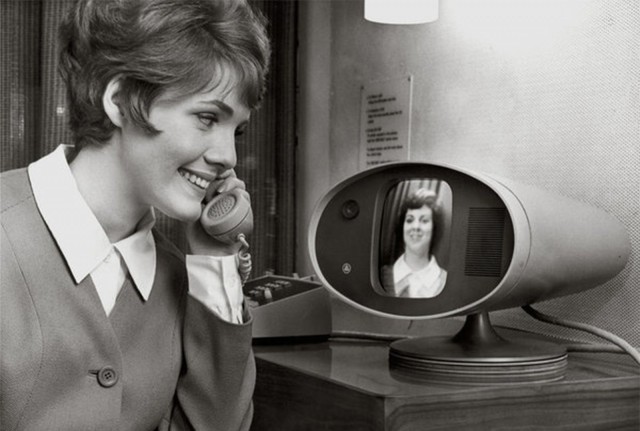
A futuristic kitchen would feature a radar range, an early form of microwave oven. Ford rolled out its first Mustang, while in the Japan Pavilion, visitors were amused at a tiny car – a Toyota.
Disney, inspired by the New York World’s Fair to create a permanent version with the Epcot Center, introduced Audio-Animatronic robots that blinked, talked and sang. Visitors to the Illinois Pavilion were greater by a moving, talking Abraham Lincoln.
Five decades before the Apple Watch, Bulova used the fair to show off the first fully electronic watch, the Accutron, which used a 360 hertz tuning fork and was powered by a one-transistor electronic oscillator circuit.
Ryan Ritchey, a Philadelphia filmmaker who did a documentary on the fair called After the Fair, said American industries willingly shared their vision of the future with the public, which would be inconceivable today.
“If you think of a fair like the one in 64, you presume the companies taking part would be Apple, Google, Microsoft,” Ritchey said. “There’s so much more competition that companies operate in secret and do not release a product until it’s fully formed. A lot of companies at the fair were proud of their original research and original information and they wanted to share with the public so they would be in awe.”
Ritchey said it was a rogue fair because it was never recognized as an official world’s fair. That did not matter to businessman Robert Moses, who wanted to re-create the magic he felt as a child at the 1939 World’s Fair, which also was in New York, and planned the two-year event to show American ingenuity.
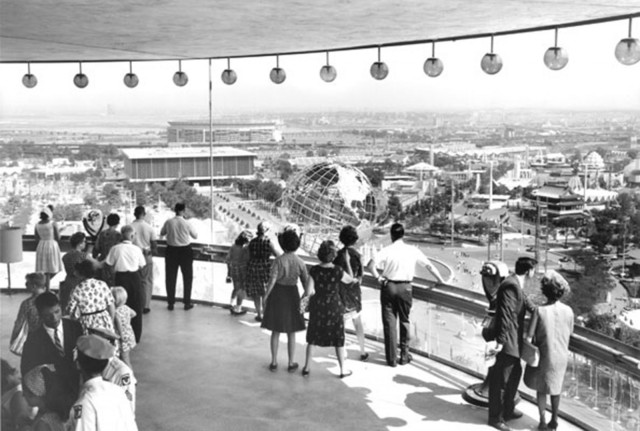
In an NBC special about the fair, commentator Edwin Newman called the fair “outlandish,” saying it was futuristic only in a “comic book way.”
The fair did not attract as many people as expected and it lost money. It was also criticized for the hodge-podge architecture, though history is now kinder to the structures that made up the fair, Ritchey said.
The impact the fair had on Silverstein was indelible. Because of the fair (and the television show Star Trek), Silverstein pursued a career in science and went on to work as a biologist.
He witnessed another bit of history near the fairgrounds in 1966, when he and his family saw the Beatles at Shea Stadium. He remembers feeling sad looking over at the fairgrounds and seeing construction equipment and debris from demolition of the fair’s buildings.
Today, he is involved in preservation efforts to restore the New York State Pavilion, which was the tallest building at the fair.
“Maybe it was the timing, but I don’t think the fair would have had the same impact as it did if it was held later, like after the moon landing or during Vietnam,” Silverstein said.
Watch the first six minutes of Ritchey’s film below.
